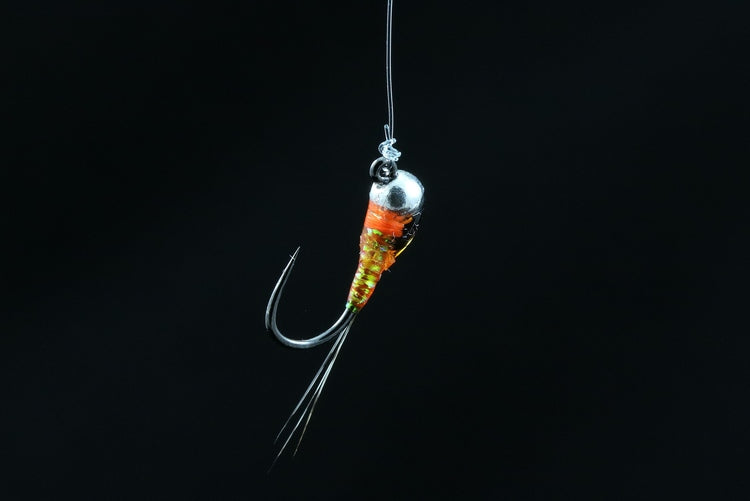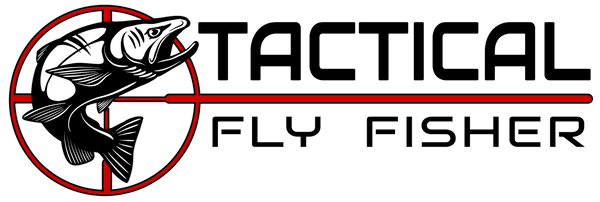
WINGCASES, SHELLBACKS, AND WINGS: TO INVERT OR NOT TO INVERT? THAT IS THE QUESTION.
Share
*Authors note: I've had plenty of response saying wing cases aren't necessary. Even if you fit in this category of belief, this post also applies to other fly additions like biots on prince nymphs, wings on flies like the rs2, and shellbacks on stoneflies, scuds, and caddis larvae.
I've had several questions lately about wing cases on jig nymphs and other flies tied to be inverted. Many other tiers will invert their wing cases (tie them on the bottom or belly of the hook) on inverted flies in the assumption that the wing case would not be visible to a trout if it was placed on the top of the hook once it flips upside down. As you may have seen from the Butano and Pliva Perdigon tutorials, I do not invert wing cases on nymphs tied so that fly rides upside down. In answer to the questions I've had on this topic, here are some reasons why:
- Invertebrates do not necessarily swim or drift upright in the water column. I witnessed this first hand during my last fisheries biology position. Much of the field work I did while I lived in California involved snorkeling to analyze habitat use by juvenile salmonids in newly restored stream reaches. In addition to looking for fish, I kept my eyes out for drifting macroinvertebrates as well. What I noticed is that they often flailed and twisted in the micro-currents as part of their effort to regain purchase on the substrate. Thus, trout rarely see a view of an upright mayfly, stonefly, or caddisfly drifting toward them with their wing case shown in perfect balance. Personally, one of the main reasons I think that fine tippets convince picky fish to eat, is that their suppleness allows artificial nymphs to twist and flail a bit more like the natural invertebrates do.
- Contrary to what seems to be conventional thought, when nymphs are tied on jig hooks, the wing case actually faces the fish more often if it is tied on the top of the fly in the normal fashion. While the idea behind jigs is inverting the fly, this inversion is almost never a perfectly achieved in horizontal fashion. In my experience, the knot on a jig fly typically slides to the top of the eye after casting and fishing, even if it was tied in the middle of the eye perpendicular to the shank of the hook. This is illustrated in the photo of the Butano below. I'm sure this knot position will be familiar to anglers who have fished jig nymphs before.
Now let's analyze this knot position in a hypothetical nymphing scenario. In a laminar flow setting, the currents will be fastest in the middle 2/3 to 3/4 of the column with a slight slowing near the surface due to air friction and a drastic slowing near the bottom due to friction with the substrate; as in the picture below where the width of the arrows represents current speed and direction.
With a Euro-nymphing rig, even if you keep a near vertical angle with your sighter (which most people don't in an effort to lead their flies and keep in contact), a slight bow in your tippet will develop below the surface due to drag in the upper faster layers of the column. Because of this slight drag, the tension placed on the fly will be in a slight downstream manner. This downstream tension inverts the fly with top of the hook pointed downstream facing potential target fish, as in the image above. This means that the wing case tied on top of your inverted nymph actually points toward the view of waiting trout instead of away as many people suspect. Also surprisingly, this means that on a fly not tied inverted, the hook point would ride downward and the wing case would face away from fish facing in an upstream manner. However, because of turbulent currents, lateral drift, and leader angles across the stream (instead of just vertically under a suspension device or sighter), the nymph likely provides an oscillating profile that routinely shows and hides the wing case as it twists back and forth during the drift. Therefore, the wing case will likely make at least a short appearance,.during a drift toward a waiting trout, regardless of whether it is tied inverted on a jig hook or not.
Here are the last two and probably more important reasons to tie jig nymphs with wing cases on top of the hook in a normal fashion.
- It is easier to tie jig or inverted nymphs with wingcases in the normal upright fashion. Turning the fly upside down in the vise creates problems with the hook point getting in the way of materials and access for your fingers, which will likely have run ins with the hook point if it's upside down and you aren't careful.
- Last and most importantly, I've tried both methods of wingcase placement with inverted flies. Those tied with wing cases in the normal fashion have fished as well or better for me than those tied inverted. Drift theory aside, this is the only real reason that counts much to me.
While there will certainly be those that still disagree with me, I hope this will give you insight into how I formulated my thought process for the "jig nymph wing case question." My guess is that whichever way you decide to tie the wing case on an inverted fly, it will still catch fish just fine.
Devin


